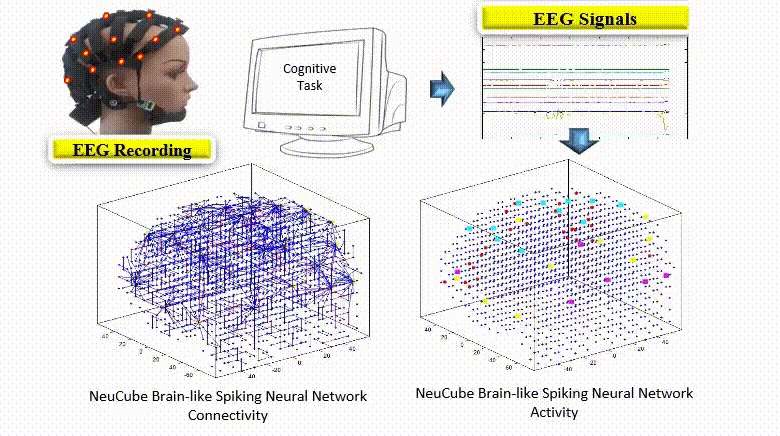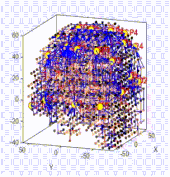Maryam Gholami Doborjeh, Grace Y. Wang, Nikola K. Kasabov, Robert Kydd, Bruce Russell

Inspired by a biologically realistic model of the brain that processes dynamic input information across a large number of spiking neurons, we propose a novel neurocomputing development system, called NeuCube (http://www.kedri.aut.ac.nz/neucube) that utilizes 3-D brain-like spiking Neural Networks (SNNs) for modelling, learning, classification and visualisation of spatiotemporal brain data for better understanding of brain functions. As a case study, the method was applied to Electroencephalography (EEG) data collected during cognitive task performed by opiate addicts, those undergoing treatment and a healthy group. This research revealed new knowledge on brain functions associated with mental activity through the analysis of the SNN model learned connectivity and activity.
A NeuCube model includes several methods and algorithms that allow different aspects of EEG data to be studied and analysed: Spatial mapping of the data into a 3-D SNN structure – SNNc; unsupervised learning in the SNNc; dynamic 3-D visualization of the connectivity and the spiking activity during training of the SNNc for the discovery of new information related to the data and the brain processes that generated it; supervised learning in a SNN classifier; parameter selection and optimization; model validation. In order to study the feasibility of the proposed method, we visualized the neuronal connectivity learned in a SNNc to display the spatiotemporal differences between EEG data collected from different groups of subjects completing different cognitive tasks. The overall aim of the study was to extend our understanding of drug-related effects on cognitive functions along with presenting a novel method for EEG data analysis and dynamic visualisation.
Keywords: Spiking neural networks (SNN); Electroencephalography (EEG) data; EEG data classification; evolving spiking neural networks (eSNNs); NeuCube; spatiotemporal brain data (STBD); response to treatment of subjects addicted to drugs.

